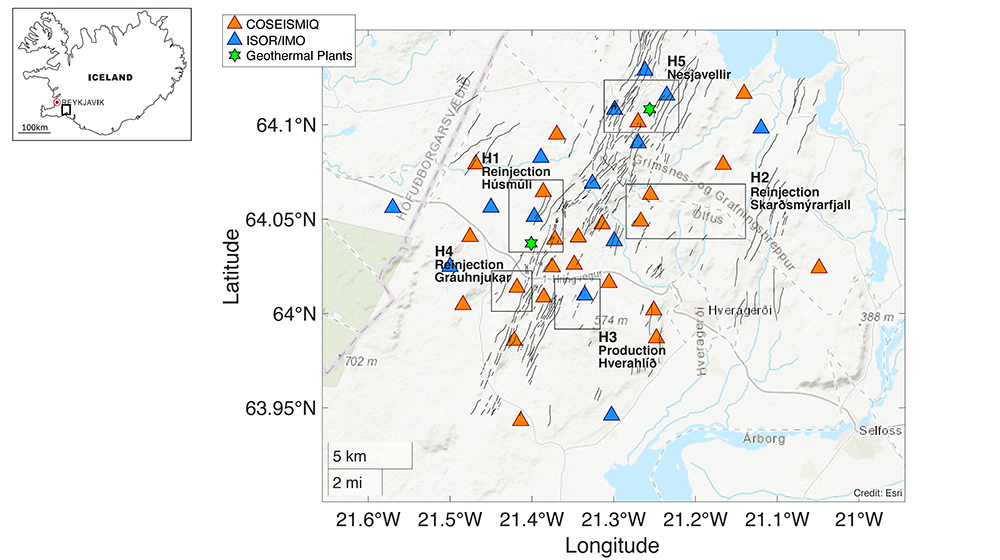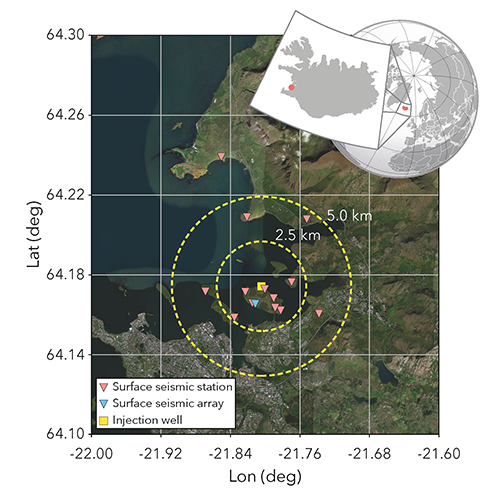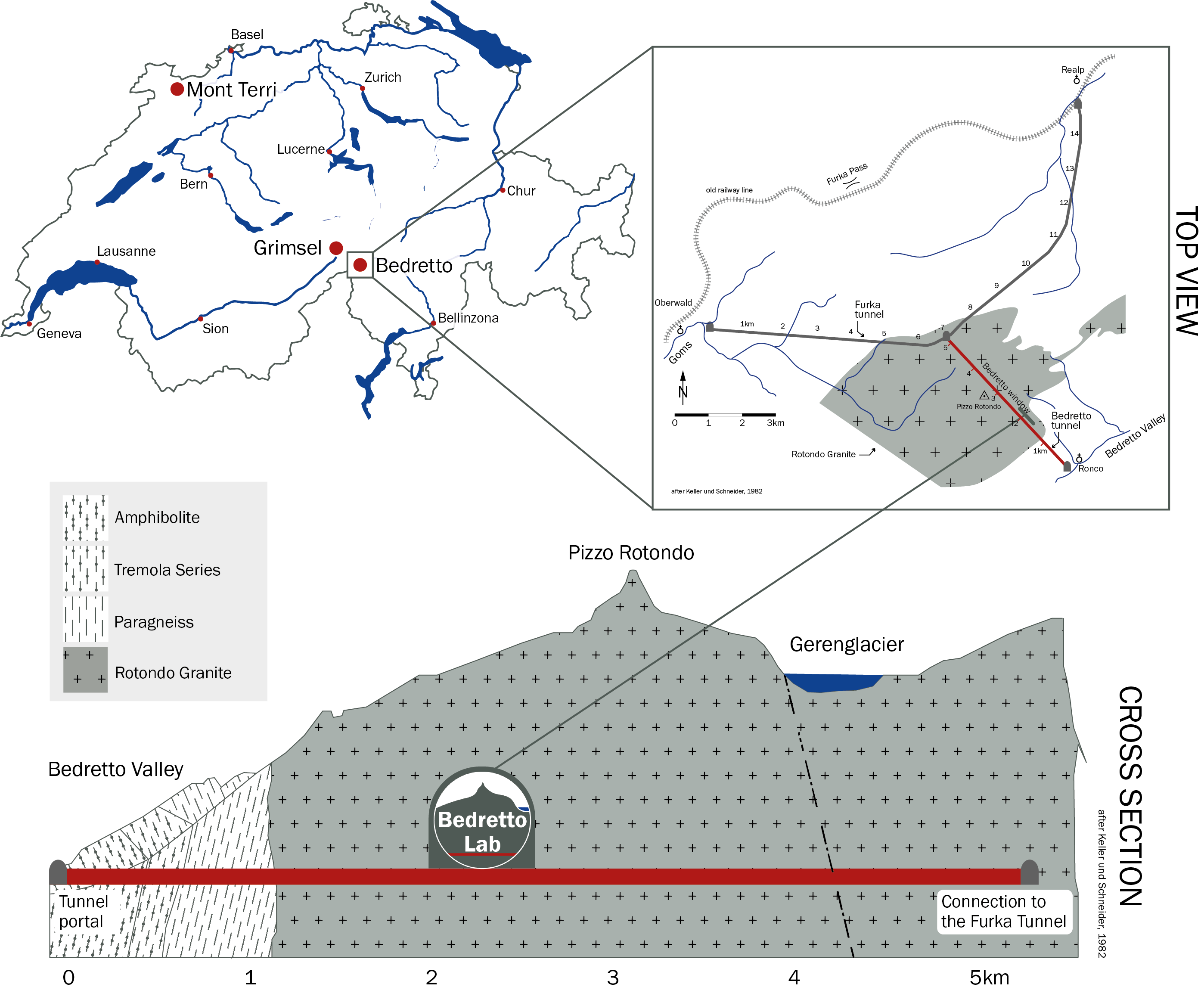Adaptive Traffic Light System
ATLS – the Adaptive Traffic Light System – is a decision-support tool that aims to provide operators with a reliable and up-to-date estimate of the risk of induced seismicity during reservoir operations. ATLS tools are fully probabilistic, data-driven (in the sense that microseismic date are integrated in real-time to update geomechanical and seismicity forecasting models) and risk-based (integrating hazard, exposure, and vulnerability). The system should therefore at any point in time integrate all available information on the reservoir evolutions into the best possible forecast. Combined with enhanced and largely automated seismic monitoring approaches, ATLS promises toreact much earlier than classical Traffic Light Systems to concerning developments.
An ATLS is the easiest thought of as a probabilistic seismic hazard and risk study updated and recalibrated on the fly as new data arrives. An ATLS inherently also contains a classical Traffic Light Sytem but in addition deploys all the components also present in a-priori seismic hazard and risk studies, such as forecasted rates of events, ground motion modelling, exposure, building vulnerabilities. The output can likewise be portrayed as forecasted events, hazard or risk curves or maps. Scenario shakemaps and loss assessments are inherent capabilities of ATLS. Different from classical time-indepenendet probabilistic seismic hazard assessment, for induced seismic risk assessment in real time, updated seismic data from a real-time seismic network, hydraulic data as well as the planned injection strategy is delivered as time-dependent input to a range of forecast models that will deliver seismicity rate forecasts for different forecast horizons (hours, days, yearly) or stochastic event sets to the hazard and risk calculation.
Applications of ATLS in Recent Projects
Utah FORGE
DEEP will establish a real-time test bench for innovative seismic processing, seismicity forecast modelling and adaptive risk assessment using ATLS, and apply these toos for the first time for a full-scale EGS system, the Utah FORGE. The operation of ATLS within the DEEP context fed by heterogeneous high resolution data streams requires a versatile end-to-end platform (sensor data acquisition to risk-based decision making). Such platform should have the ability for both production-grade processing as well as deployment of novel models, algorithms, plugin of new analysis steps. In order to allow for independent scientific development, integration of novel and experimental algorithms with operation-ready systems and lower development risks, a modular development of the DEEP software ecosystem is needed. This will be the key to the success of the project and form much of the legacy of the project.
Learn More about ATLS
M. Broccardo et al. (2020): Induced seismicity risk analysis of the hydraulic stimulation of a geothermal well on Geldinganes, Iceland. Nat. Hazards Earth Syst. Sci., 20, 1573–1593.
F. Grigoli et al. (2017): Current challenges in monitoring, discrimination, and management of induced seismicity related to underground industrial activities: A European perspective. Reviews of Geophysics, Volume 55, Issue 2, 310-340.
E. Trutnevyte and S. Wiemer (2016): Tailor-made risk governance for induced seismicity of geothermal energy projects: An application to Switzerland. Geothermics, Volume 65, 295-312
M. Herrmann et al. (2019): A Consistent High‐Resolution Catalog of Induced Seismicity in Basel Based on Matched Filter Detection and Tailored Post‐Processing. JGR Solid Earth, Volume 124, Issue 8, 8449-8477.
A. Mignan et al. (2017): Induced seismicity closed-form traffic light system for actuarial decision-making during deep fluid injections. Sci Rep 7, 13607.
M. Broccardo et al. (2017): Hierarchical Bayesian Modeling of Fluid‐Induced Seismicity. Geophysical Research Letters, Volume 44, Issue 22, 357-367.
E. Király-Proag et al. (2018): Multicomponent ensemble models to forecast induced seismicity. Geophysical Journal International, Volume 212, Issue 1, 476–490.
E. Király-Proag et al. (2016): Validating induced seismicity forecast models—Induced Seismicity Test Bench. Volume 121, Issue 8, 6009-6029.


